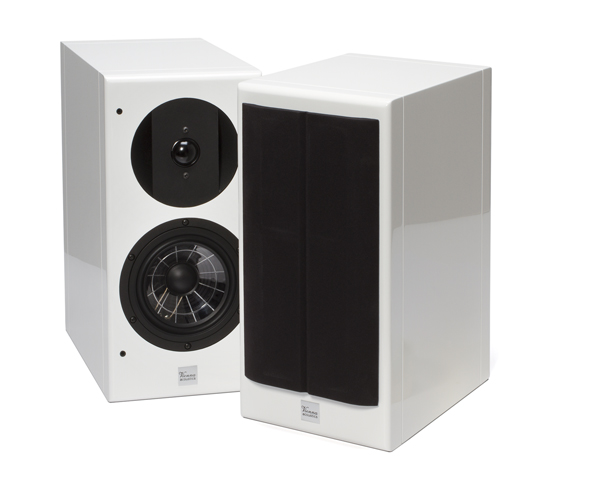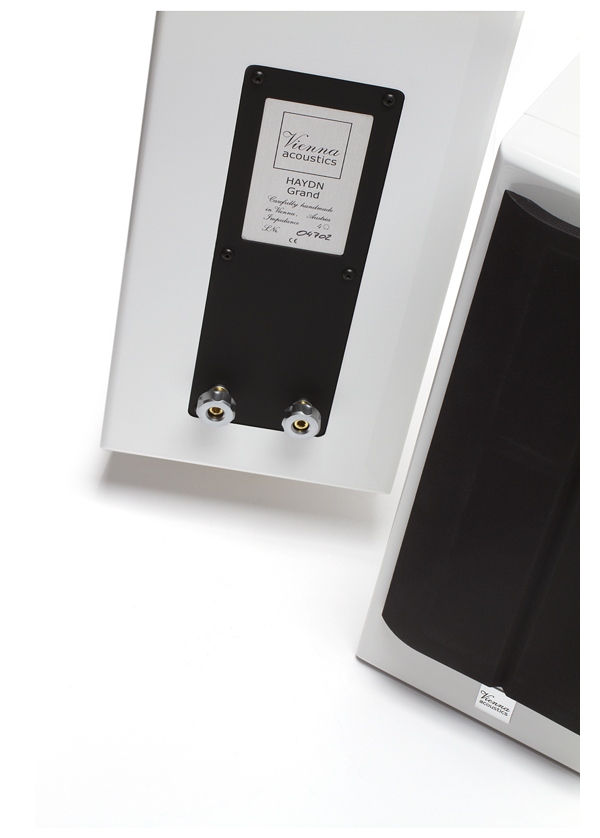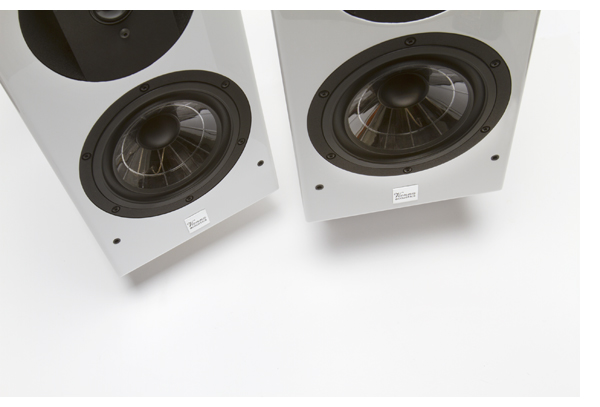Vienna Acoustics Haydn Grand Symphony Loudspeaker Rock You Like a Hurricane
By Jeff Dorgay Known for naming its speakers after famous German composers, Vienna’s latest model should be rechristened the Schenker or the Jabs—as they were the two German guitarists whose music I blasted at the beginning of the review process. Small speakers often struggle to play rock music, so, to gauge potential, the Scorpions’ Blackout and Love at First Sting were first on my agenda. Powered by the mighty McIntosh MC1.2kw monoblocks and capable of delivering 1200 watts each, what better way to start a listening session?
Known for naming its speakers after famous German composers, Vienna’s latest model should be rechristened the Schenker or the Jabs—as they were the two German guitarists whose music I blasted at the beginning of the review process. Small speakers often struggle to play rock music, so, to gauge potential, the Scorpions’ Blackout and Love at First Sting were first on my agenda. Powered by the mighty McIntosh MC1.2kw monoblocks and capable of delivering 1200 watts each, what better way to start a listening session?
Pondering KISS’ Alive! as my next choice, I instead stayed with Schenker, this time Michael Schenker from UFO, while turning the volume control perilously higher for a majority of Lights Out, the band’s powerful double live set. As I completely ignored the 180-watt maximum power rating on the spec sheet, the thought of reaching for my checkbook to buy the Vienna review samples crossed my mind. But not for the usual reasons; the meters on the MC1.2kws were moving way up the scale. You probably won’t hook your Haydns up to a pair of 1200-watt behemoths, but if you do, rest assured that their robust construction is up to snuff.
These elegant $1,800 mini-monitors have a small footprint. They are only 6.85 inches wide, 10.4 inches deep, and just over 14 inches tall. With the appropriate stands, perfect for a small-to-medium-size room. My review pair arrived in an optional piano white finish that was simply beautiful. No part of these understated speakers is done by chance. Featuring a 6-inch woofer made from the company’s clear X3P material and latest-generation 1-inch soft dome tweeter, the Hayden also takes advantage of enhanced technology gleaned from Vienna’s top-of-the-line speakers.
The Haydn’s unique wedge bass port places the tweeter directly in the front of the angled port. Successfully eliminating port noise, which can be a problem with small monitors featuring a high excursion woofer, the Haydn delivers the goods when called upon to reproduce lower bass frequencies. Kraftwerk’s “Boing Boom Tschak” is an excellent test for such a task. Many small, ported speakers make a muffled groan when asked to handle the deep bass on this record, but the Haydens sailed through without issue. The MC1.2kws were reading about 600 watts on the power output meters before the woofers hit their stops—indicating an end to the madness.
Bass fun aside, paying careful attention to speaker rake is key to extracting the maximum performance from the Haydns. Tilting them back slightly, about a degree at a time, reveals a spot where they just disappear from the listening position. As a result, the soundstage dramatically increases. If you have DualLevelPro on your iPhone, you can quickly get the speakers within a half-degree of one another. You’ll know when you have it right: the stereo image will extend well beyond the speaker boundaries. If it’s not perfect, the image just hovers between the speakers. Take 30 minutes, and grab a friend to help, and you will be in heaven.
After getting read on the speakers, I replaced the MC1.2kws with the Conrad Johnson MV-50C1. This EL-34 powered amplifier produces 45 watts per channel, more than enough for all but the most ambitious listening. It proved an excellent match for the Haydns’ 89dB sensitivity. Similarly, the Rega Brio-R (also reviewed in this issue) made for an excellent solid-state choice and logged a fair amount of listening time as well.
Fatigue Free
While I preferred the scrumptious match of the CJ amp with the Haydns—I really enjoy the hyperrealism of listening nearfield with a pair of high-performance monitors driven by a great vacuum tube amplifier—the Haydns’ smooth albeit resolving soft dome tweeter was never harsh. So those with solid-state amplification need not fear. Audiophiles that love solo vocalists will be very pleased with these speakers. To wit, play Keren Ann’s recent 101. The breathy, expansive vocals will melt even the most diehard Patricia Barber fan and really show off the midrange clarity offered up by the Haydens.
When moving to electronica from Deadmaus, Kruder & Dorfmeister, and Tosca, the music underscored the small speakers’ ability to produce a substantial amount of bass, even in my main listening room (16 x 24 feet). “Bug Powder Dust” from The K&D Sessions goes very deep. Yet the Haydns captured most of the fundamental tone, with a bit of sub-harmonics as well. The single 6-inch driver performed impressively, yielding solid bass reproduction and quite a bit of texture. Of all the speakers we auditioned for this issue, the Haydns were the only pair that went toe to toe with my Magenpan 1.6s in terms of upper bass detail—no small feat. I was consistently surprised at the amount of low-frequency oomph they mustered.
Great small monitor speakers also excel at pinpoint imaging, and the Haydns didn’t shirk in this area, either. Listening to the soundtrack to the 1981 animated classic Heavy Metal, the main vocals of “All of You” hovered out in front of my face, with the guitars far behind the imaginary line between the speakers. Moreover, the spacey electronic effects were distinctly placed from left to right, without ever losing the bass line.
As much as I punished these speakers at the beginning of the review, they did an equally excellent job playing music at very low levels—a great example of their linearity. Should you happen to be an apartment dweller that lacks both space and the luxury to really wind up your system, these speakers can keep you very happy until you don’t have neighbors behind your adjoining walls.
While I wouldn’t generally pair 89dB speakers with an SET, the Haydns were so easy to drive, my 9-watt-per-channel Woo Audio amplifier proved a delicious partner. Listening to Tomita’s Live at Linz, 1984–The Mind of the Universe at low-level in the nearfield made me feel like I was sitting in a gigantic pair of headphones, with synthesizer effects sounding as if they were coming right from the middle of my head.
If you have a modest-sized room and won’t miss that last octave of bass, the Vienna Acoustics Haydns practically have no faults, especially at this price. There are a handful of small monitors that offer more bass and resolution, but they cost three-to-five times as much. Kept in the context of the components with which they will probably be paired, these speakers should be able to satisfy the fussiest of budget audiophiles. And, considering their small size, multiple finish options, and fact that they present a load that is easy to drive, the Haydens’ versatility seems to know no bounds.
Vienna Acoustics Haydn Grand Symphony Edition
MSRP: $1,850/pair (standard finish) $2,000/pair (piano white and rosewood)
Peripherals
| Analog Source | Rega P9 turntable Sumiko Palo Santos cartridge |
| Digital Source | Sooloos Control 15 dCS Paganini |
| Preamplifier | McIntosh C500 Croft Micro 25 |
| Power Amplifier | McIntosh MC1.2kw Conrad Johnson MV-50C1 Croft Series 7 Rega Brio-R (integrated) |
| Cable | Audioquest Columbia |





